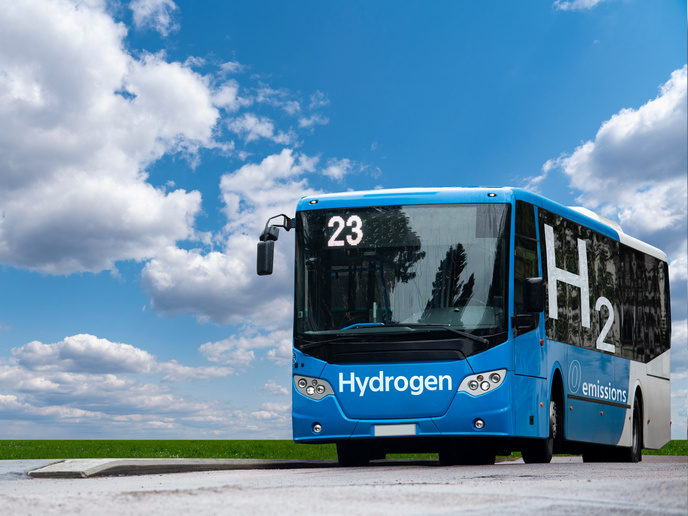Helping to bring hydrogen-fuelled buses to a street near you
Hydrogen fuel cell electric vehicles (FCEVs) utilise a hydrogen fuel cell system for propulsion. The fuel cell combines outside oxygen with pure hydrogen fuel stored on board, generating an electric charge that powers a battery that drives the vehicle forward. There are around 2 500 fuel cell buses (FCBs) deployed around the world, with a significant increase in the past five years. But barriers remain. These are primarily due to hydrogen unavailability and high costs, which is where the JIVE 2(opens in new window) project steps in. The stakes are high: there is ample research showing that common air pollutants can increase the risk of developing a range of illnesses, including respiratory and cardiovascular effects, lung cancer and exacerbated asthma. The replacement of diesel buses with FCBs can significantly reduce, if not, eliminate, these harmful emissions. A study undertaken by the project(opens in new window) showed that a fleet comprised of 100 % FCBs utilising green hydrogen can eliminate 100 % of nitrogen oxide emissions and reduce its global warming potential by 79 %. Future uptake will be heavily influenced by the suitability of routes, national and international emission reduction targets, and improvements in the total cost of ownership. If these challenges to uptake are addressed, ever-larger fleets can be expected to be deployed in the future.
Increasing the number of buses in Europe from a handful to hundreds
JIVE 2 builds on the work of the initial JIVE project that ended in 2024. JIVE 2 has deployed 160 buses in 11 cities across 6 countries, and by the end of 2024, the project’s buses had travelled 13.1 million km. The FCBs’ fuel efficiency, ranging from 5.5-9.1 kg/100 km, achieved, and at most sites, exceeded, the project’s target of less than 9 kg/100 km. This result lowered operational expenditure, and demonstrated the technology’s continuous improvement. The project’s partners dived in head first: the deployment partner in Groningen and Emmen (Netherlands) deployed a state-of-the-art fleet and infrastructure that will continue to operate after the project. It is planned that all diesel buses will be replaced with a mix of battery electric buses and FCBs. Challenges were also translated into successes: in the United Kingdom, Brighton & Hove Buses (BHB) deployed a first-of-its-kind liquid hydrogen storage system to address a cap imposed on the amount of hydrogen stored on-site at their depot in Crawley. This allowed for all 54 buses to be put into regular operation.
Replicating demonstrator findings in full-scale commercial settings
The JIVE 2 project has been one of the major contributors towards advancing Europe’s FCB sector, and its impact will continue to be felt well into the future. “I would like to thank all the partners for their work and involvement on this journey with us. We are also extremely grateful to the EU’s Clean Hydrogen Partnership(opens in new window) for their support and flexibility. “The JIVE projects, combined, have been a significant milestone in the fuel cell bus industry, increasing the number of buses in Europe from a handful to hundreds. We look forward to continuing this journey,” says Alex Stewart, a consulting partner in Environmental Resources Management’s(opens in new window) hydrogen and fuel cell team.



